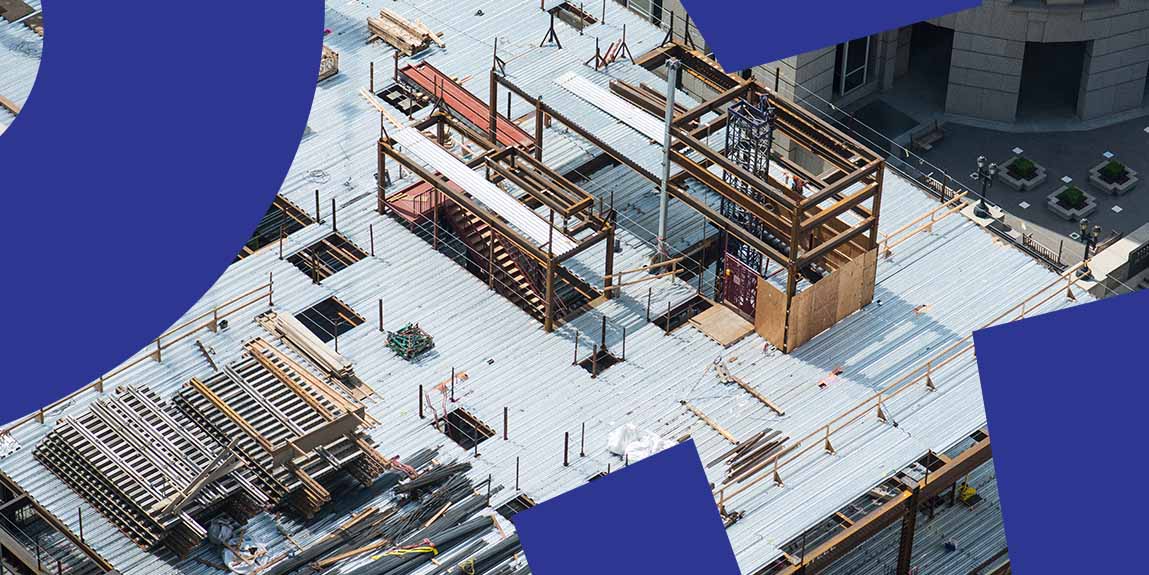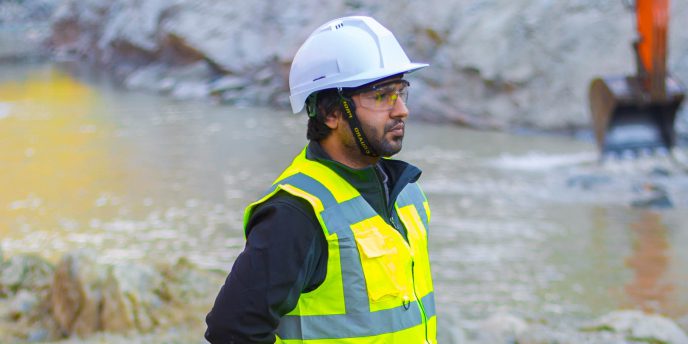

Incorporating IoT into an industry specific and tailored technology platform ensures that machines are not just connected but intelligent. Real-time data from sensors and devices empower OEMs and their customers to adapt swiftly to industry changes, optimizing performance based on dynamic conditions across delivery of machines through dealers, service & maintenance management all the way to individual machine performance on construction sites.
The construction industry is ever-evolving, with technological advancements shaping the landscape. Shifting to an operating data platform specifically designed for construction ensures that data from connected machines seamlessly integrates with emerging technologies, allowing companies to adapt to changes and stay at the forefront of industry trends.
As a manufacturer, scalability is paramount. Embracing industry specific cloud technology enables OEMs to scale their operations organically, ensuring that machines can meet the increasing demands coming from both internal (e.g. spare parts sales) as well as external (mixed-fleet end customers) projects without compromising performance.
IoT connectivity takes scalability to the next level. Machinery, armed with insightful data, can scale operations intelligently, responding to project demands in real-time. This interconnected approach ensures optimal performance and optimal resource allocation as companies grow.
This enhances interoperability across the construction value chain. Machinery that seamlessly communicates with diverse applications, breaks down silos and fosters a collaborative ecosystem. This interconnected approach optimizes workflows and enhances the overall efficiency of construction projects, driving benefits for all entities in the value chain.
‘Machinery, armed with insightful data, can scale operations intelligently, responding to project demands in real-time. This interconnected approach ensures optimal performance and optimal resource allocation as companies grow.’
Moving to Cloud technology that has the construction industry’s demands to standards built in, along with protocols for data harmonization and integration, liberates OEMs from the constraints of vendor lock-in. Leading OEMs have the flexibility to choose and integrate the best-in-class solutions for their specific needs, fostering innovation and preventing reliance on a single vendor’s proprietary ecosystem.
The integration of IoT technology and access control systems offers significant enhancements to construction site safety, addressing the complex challenges inherent in such dynamic environments. Through the deployment of IoT devices, including sensors, wearables, and cameras on machinery, construction sites evolve into intelligent spaces capable of real-time monitoring, issuing warnings, and conducting data analysis.
Manufacturers are increasingly expected to prioritize safety in their solutions, providing live feedback and warnings to avert accidents on construction sites. Furthermore, the data harvested from these advanced technologies plays a crucial role in predicting and mitigating future incidents, thereby fostering a safer and more regulated construction environment. It is imperative for manufacturers to embrace platforms that facilitate seamless data sharing across the construction ecosystem, encompassing rental companies, multiple contractors on a single site, and site managers.
Access control systems enhance the safety framework provided by IoT technology by regulating machine usage on construction sites, ensuring that only certified personnel with the requisite training and authorization can operate specific equipment. This system also enables contractors to efficiently track machine usage for accountability and cost allocation purposes.

The convergence of IoT technology and access control systems establishes a comprehensive safety management infrastructure, markedly diminishing the risk of accidents and unauthorized equipment use on construction sites.
The advent of non-proprietary data platforms is pivotal in realizing the full potential of IoT and access control systems in the construction industry. Industry cloud platforms supports the seamless sharing and analysis of data across various stakeholders, including contractors, rental companies, and site managers. By enabling interoperability and data exchange, industry cloud platforms facilitate informed decision-making, enhance operational efficiencies, and bolster safety measures.
‘The convergence of IoT technology and access control systems establishes a comprehensive safety management infrastructure, markedly diminishing the risk of accidents and unauthorized equipment use on construction sites.’
In essence, the adoption of next generation cloud platforms is crucial for fostering a collaborative, transparent, and efficient construction ecosystem, paving the way for a safer, more sustainable future in construction. The responsibility for this sits where the machine is born — with the manufacturer.
The integration of IoT capabilities also allows OEMs and their customers to innovate at the edge. Edge computing enables real-time processing of data, enhancing the responsiveness and capabilities of equipment. This innovation empowers machines to deliver cutting-edge performance on construction sites.
A commitment to delivering cutting-edge machines, requires a collaborative approach to innovation. Embracing industry cloud technology connects OEMs to a global community of technology providers, accelerating the development and adoption of new technologies that can enhance the capabilities of construction machines.
IoT brings predictive analytics into play. Proactively monitoring machine health allows for cost-effective, predictive maintenance. This data-driven approach minimizes downtime, maximizes efficiency, and optimizes maintenance costs for a more sustainable operation. On flexible and construction specific cloud platforms, OEMs will be empowered to collaborate with customers, keeping them close and loyal to the brand.
‘Edge computing enables real-time processing of data, enhancing the responsiveness and capabilities of equipment. This innovation empowers machines to deliver cutting-edge performance on construction sites.’
The construction industry is moving towards technology that enhances interoperability, promoting seamless collaboration between machines and various applications on construction sites, in customer applications and OEM backends. This interconnected approach streamlines operations, fostering a more collaborative and efficient ecosystem working environment.
The wealth of data from IoT-led connectivity enables data-driven decision-making. Analyzing this data allows OEMs to optimize own operations, streamline processes, and ultimately boost the return on investment for their manufacturing and end customer service endeavors.
Security in the IoT era is a priority. An industry cloud platform incorporates robust IoT protocols, ensuring the secure transmission and storage of data. This proactive security approach safeguards the integrity and confidentiality of critical machinery data.
Security is paramount, especially when it comes to critical machinery data. Industry cloud platforms, with its transparent nature and continuous scrutiny from a global community, enhances the security of applications, ensuring the integrity, confidentiality and compliance when it comes to managing and sharing valuable data.
In conclusion, the convergence of industry cloud platforms, IoT, and connectivity propels construction machinery manufacturing into a new frontier of innovation and efficiency.
By embracing this interconnected ecosystem, OEMs position themselves not just as manufacturers but as pioneers shaping the digital future of construction machinery – intelligent, adaptable, and at the forefront of technological excellence.
Read what our CTO Mikkel Dalgas had to say on ‘the next paradigm shift’ in our series on the role of ICPs in the new business transformation.
Never miss an insight. We’ll email you when new articles are published on this topic.


Join 1000+ construction professionals leaning into the future to explore what’s next for Trackunit and the industry.